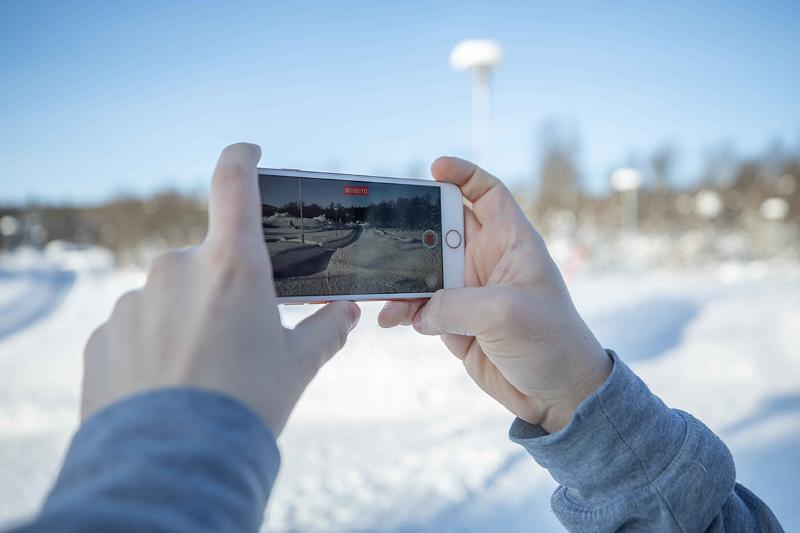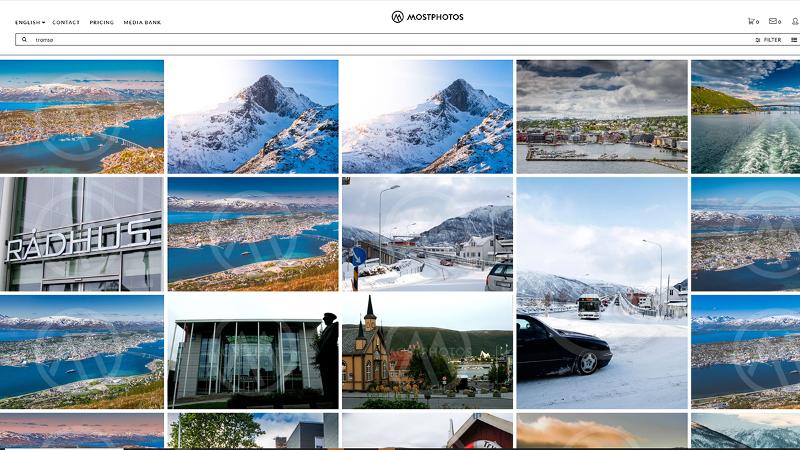
Improve your communication and outreach skills
Use images to be noticed and remembered
Visual content is perceived much faster than text. If you use images when communicating, there is a greater chance that the recipient will remember your message.
Below you get information about
- where you can find pictures you may use
- how to take great mobile pictures and videos
- in which cases you need compliance when you publish or share photos of others (ePrivacy/GDPR)
- streaming, Zoom and film production for educational purposes at UiT
Stock photos and other images you may use
Imageshop– the photo archive for UiT
In Imageshop, you will find photos taken by employees and photographers at UiT.
UiT's image archive contains photos taken by its own photographers and commissioned for UiT. The archive is continuously updated with new images.
NB! On 1 January 2023, UiT changed the supplier of its image archive, from the old "FotoWeb" to Imageshop.
The new image archive is divided into 3 parts:
- UiT's open image archive: https://uit.imageshop.no/
- Open to all (no login). This archive contains a small selection of images which are intended to be open to all and which are quality assured.
- UiT's internal archive: https://uitansatt.imageshop.no/
- Available to all employees and students at UiT. Users MUST log in with their usual UiT username and password (Feide/AD), if you are already logged in to the websites, you will automatically be logged in.
- Here you will find a larger selection of photos taken over the years.
- UiT's closed "archive" image archive
- This archive is only available to some admin users and contains older images and images without meta tags, consent forms etc.
MostPhotos – illustration images
All employees and students at UiT have free access to the digital image database MostPhotos.
- You may use the images in all UiT contexts.
- You may use them in marketing, publications, on websites, in educational contexts, etc.
You can find more info about MostPhotos here.
Wikimedia Commons
On Wikimedia Commons you will find freely usable media files (images, videos, and sounds).
Crediting of photos, illustrations and videos
Always credit the source of images, illustrations or videos. First write the name of the person, then the affiliation. For example Fredrik Hansen/Mostphotos.com or Line Hansen/UiT.
Purchase of photo / video
If you need to buy photos / video from a photographer, it is important to remember to secure sufficient rights for use and archiving. As a general rule, we recommend that you make sure to buy the rights to free and unlimited use and the right to archive the photos in your own archive. Feel free to contact us for tips and advice before entering into a purchase agreement.
Do you want to take your own pictures? Here are some tips:
If you use proper photo equipment when photographing and filming, you increase the chance of achieving good quality sound and images.
However, there is nothing wrong with using a mobile phone. In most cases, it will be more than good enough.
Tips for taking good photos:
- Make sure the camera is set to as high a resolution as possible. You can check this in the settings in the photo app (on your mobile) or in the camera you use.
- Get close! Then the pictures often get better.
- If you want to take a portrait, use portrait mode on your mobile - if you have one.
- Take a picture in both width and height format, if possible.
- Make sure that what you are taking pictures of, gets enough light.
- Check that the background is not messy and takes up too much attention.

Do you want to make your own videos? Here are some tips:
Tips for filming better with your mobile:
- Film in full HD = 1920 x 1080 pixels resolution. You can check this in the settings in the video app (on your mobile) or on the camera you use.
- Film using a width format (landscape). Exceptions are, for example, if you are going to make an Instagram story, then you should film in height format (portrait).
- Get close! Then the video often turns out better.
- Hold the camera still, and do not allow much movement when shooting.
- Feel free to use a tripod if you have one. Alternatively, tables, door frames or the like, can work well as support.
- Remember that good sound is often as important as good filming. Get close, film in a quiet room, and feel free to use an external microphone if you have one. If not, make sure your fingers do not cover the microphone.
- Make a small plan for what you are going to film and in what order. This will make the finishing work easier.
On most mobiles you can edit video clips. If your phone does not have an editing feature, you can download a free app or purchase one.
You must provide compliance when using images of people (GDPR)
If you are going to publish or share photos of people, those who are photographed / filmed must give permission for you to use it. This applies to anyone who is photographed, filmed or made audio recordings of. There are a few exceptions, see below.
You must be able to document the compliance, that it has taken place voluntarily and that those photographed have received sufficient information about image use and rights.
Images that require consent
When individuals are the main subject of an image, you need their compliance. This also applies to illustrations where «models» illustrate a real situation (study situations, learning environment etc.).
The person who photographs/films bring a compliance form, and ensures that it is filled in, and that the person who is photographed/filmed understands which rights he/she has. The photographer is responsible for ensuring that the form is stored in a safe manner, and that it is easy to track back to the photos or film for which the compliance applies.
A person in a photo can withdraw their compliance at any time.
Images that do not require consent
There are some exceptions to a written compliance. Photos that are not offensive to those in the image, you can both take and publish without consent. This applies to photos
- which has current and public interest
- where the situation or activity is the real motive
- where the person (s) in the picture are less important than the main content of the picture
Examples of this can be a group of people at a concert or an event of general interest. You do not need written consent to take pictures of people who are part of the event, such as speakers, artists, etc.
There will sometimes be a question of definition of what is a situation picture, and what is a portrait. If in doubt, obtain compliance from the person.
Desire for protection
Some people must or want to shield themselves from photography/filming at events that are covered by the exemption rules. We should address this.
Compliance form
Use this declaration of consent (available in both Norwegian and English): http://uit.no/samtykke.
Online teaching and streaming
If you want to stream meetings or classes, we recommend that you check out these two pages before you get started:
Strømming | UiT
Zoom (videomøter for undervisning) | UiT
Movies for educational purposes
Teachers and employees at UiT can contact Result to get admission. Either for use in teaching directly, as part of Canvas rooms or for other online teaching programs. You will find more information and order forms on the Result website.
Do you need help and advice? Please contact the Communication section.
